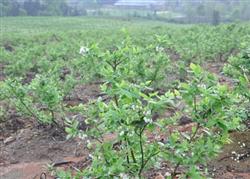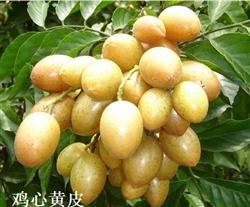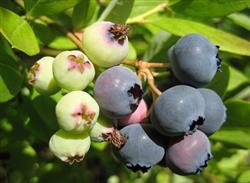Where can I find ways to grow blueberries?

Where can I find ways to grow blueberries? How to manage blueberries after planting? Also ask netizens with blueberry planting experience to help introduce blueberry pulp, sweet and sour moderate, fragrant. Can be eaten fresh, can also be processed into jam, fruit juice, fruit wine and so on. With the increasing demand of consumers for blueberries, the planting area of blueberries is also expanding day by day, so the farming network has sorted out the planting methods and management methods of blueberries, which are listed in detail below for netizens' reference. 1. Blueberry planting conditions: blueberry cultivation has a wide range, and suitable varieties can be selected according to the local climate, but it is not suitable for development in the northern areas where there is little snow and is vulnerable to frost. The slope of the selected garden should be small and should not exceed 10 degrees; the soil pH value is 4.0-5.5, and the optimum range is 4.3-4.8; the soil organic matter content is not less than 5%; the soil is loose, well ventilated, moist but without stagnant water. Preparation before blueberry planting: after blueberry planting is selected, green manure should be pressed deeply one year before planting, with a depth of 20cm to 25cm, and soil preparation after deep ploughing and ripening. Before planting, the soil that does not fully meet the requirements should be improved to facilitate the growth of blueberries. Third, the planting of blueberries: blueberries can be planted in spring and autumn, with a high survival rate in autumn, and early rather than late in spring. The row spacing is 2 m × 2 m or 1.5 m × 3 m for rabbit-eyed blueberries, 1.2 m × 2 m for tall blueberries and 0.5 × 1 m for dwarf blueberries. Rabbit eye blueberry white flowers are not real, it is best to configure high clump blueberries as pollination varieties. The white flower fruiting rate of blueberry in high clump and dwarf clump is higher, but the configuration of pollination trees can improve fruit quality and yield. The allocation ratio of main varieties to pollinated varieties was 1 ∶ 1 or 1 ∶ 2. 4. Daily management of blueberries: 1. Loosen the soil of blueberry orchards at the right time: because blueberry roots are shallow, slender and have no root hairs, the soil is required to be loose and well ventilated. Clear ploughing can be carried out from early spring to August, and it is disadvantageous to overwintering after entering autumn. Clear tillage is often used to cultivate tall blueberries on sandy loam. The suitable depth of ploughing is 5cm to 10cm, too deep is easy to damage the root system. Soil mulching method can also be used, which is widely used in blueberry production. It can increase soil organic matter, improve soil structure, regulate and maintain soil moisture, reduce soil pH value, control weeds and so on. Covering the dwarf blueberry soil with 5-10 cm sawdust can increase the yield by 30% and the single fruit weight by 50% in 3 years. Leaves, straw and other crop straws can also be used, but the effect is not as good as sawdust. 2. Weeding in blueberry orchard: weeding is a very important link in blueberry orchard management, which can increase the yield by more than twice. Chemical herbicides are widely used in blueberry production. This is because the cost of manual weeding is high, and it is easy to damage the roots, especially in the cultivation of dwarf blueberries. because the rhizomes walk in series, the whole orchard can not be weeded manually a few years later. The commonly used herbicides in blueberry orchard are diuron, simazine, chlorphenamine, 2,6-dichlorobenzene, glyphosate, paraquat and so on. 3. Fertilization method of blueberry: the effect of applying nitrogen, phosphorus and potassium compound fertilizer to blueberry is better than that of single fertilizer; the ratio of nitrogen, phosphorus and potassium fertilizer is 1 ∶ 1 ∶ 1; ammonium nitrogen fertilizer such as ammonium sulfate is better than nitrate nitrogen fertilizer; blueberry is sensitive to chlorine and do not choose chlorine fertilizer such as ammonium chloride and potassium chloride. Tall bushes and rabbit-eyed blueberries can be ditched with a suitable depth of 10 to 15 centimeters; dwarf blueberries form a garden and are mainly spread. Fertilization is carried out before sprouting in early spring, or it can be applied again in the berry ripening period. Excessive fertilization is very easy to damage or even kill the whole blueberry tree, so the amount of fertilizer application must be determined according to soil fertility and tree nutritional status. 4. Watering blueberry: blueberry root distribution is shallow, like to be moist, timely irrigation is very necessary. Blueberry irrigation needs to pay attention to water source and water quality. Deep well water generally has high pH value and high contents of sodium and calcium. Long-term use will affect the growth and yield of blueberry. PH value can be adjusted to about 554.5 with sulfuric acid during irrigation, but acid water should be irrigated again at intervals of about 3 times. 5. Pruning of blueberries: 1. Pruning methods of tall clump varieties of blueberries: pruning young blueberries: young blueberries generally remove flower buds, in order to expand the crown, increase the number of branches and promote root development. The weak and small branches were thinned in the spring of the second and third year after planting, and the crown was still enlarged in the third and fourth year, but it could bear fruit in an appropriate amount. In general, the plant yield in the third year should be controlled below 1 kg, mainly with strong branches. Adult blueberry tree pruning: adult blueberry tree pruning is mainly to control tree height, improve light conditions, mainly thinning branches, thinning dense branches, thin and weak branches, disease and insect branches and root tillers. The root potential of the open variety was weaker and stronger than that of the open variety, while the erect variety went to the central stem, opened the skylight and left the middle branch. The best fruiting age of big branch is 5 ~ 6 years old, which should be retracted and renewed in time. Weak twigs wipe off flower buds to make them strong. Adult trees have a large number of flowers, so it is necessary to cut off part of the flower buds, generally leaving 2-3 flower buds for each strong branch. 2. Pruning of dwarf variety blueberries: during the dormant period, all the aboveground parts of blueberries can be burned, new branches can sprout again, flower buds will be formed in the same year, and blossom and bear fruit in the next year. After that, it was cut by fire every 2 years, and the fruit of strong branches was maintained all the time. Before the blueberry sprouts in early spring, the aboveground parts can be stubbled from the base of the plant, all sawed off, and the sawed branches can be retained in the orchard, which can play the role of soil cover and increase organic matter. Sixth, the harvest of blueberries: the ripening period of dwarf blueberries is relatively consistent, and the early ripe fruits are not easy to fall off, so they can be harvested together after all the fruits are ripe. After the fruit is harvested, remove withered branches, fallen leaves, stones and other sundries and put them into containers. The ripening period of alpine blueberry fruit is different, the general harvest needs to last 20-30 days, usually once a week. The fruits should be picked manually when they are fresh, and can be harvested by machinery for processing. What is the planting method of blueberry anthocyanin blueberry seedlings
- Prev

What kinds of yellow skin do you have? Where is yellow bark suitable for planting?
What kinds of yellow skin do you have? Where is yellow bark suitable for planting? Please do not know the netizens to help introduce wampee originated in the tropical and subtropical areas of southern China, mainly distributed in the southern provinces of China, is one of the fruits with southern characteristics. Now the main cultivated varieties of wampee in China are: chicken heart wampee, sweet wampee, seedless wampee.
- Next

What is blueberry anthocyanin?
What is blueberry anthocyanin? What are the functions of blueberry anthocyanins? Also ask netizens who know to help introduce blueberry fruit with delicate pulp, tiny seeds, sweet and sour taste, and refreshing and pleasant aroma, and blueberry contains the highest content of anthocyanins of all fruits and vegetables, blueberry anthocyanins.
Related
- Moge, come on! The staff of the peasant association in the producing area of cantaloupe were frightened when the crowd gathered.
- Causes and Solutions of low Fruit setting rate of Apple
- Symptoms and control measures of passion fruit virus disease
- Fruit growing lesson: how do apple orchards keep high yields?
- Can you build orchards in the mountains? What are the pros and cons?
- How to manage the coloring period of Crisson grape?
- This paper introduces the processing technology of two kinds of fig products.
- How much is a month for retired teachers in rural areas by 2020?
- How can strawberry planting increase sugar content? We should pay attention to management in many aspects.
- What are the cultivation techniques on how to improve the yield of golden fruit?

